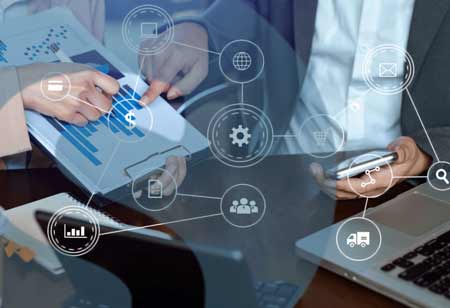Thank you for Subscribing to Business Management Review Weekly Brief
I agree We use cookies on this website to enhance your user experience. By clicking any link on this page you are giving your consent for us to set cookies. More info
Revolutionizing M&A Due Diligence Through Technology
Technology has significantly impacted M&A, improving transaction efficiency, identifying acquisition targets, and enhancing due diligence through AI, machine learning, virtual data rooms, and cybersecurity due diligence.

By
Business Management Review | Wednesday, August 20, 2025
Stay ahead of the industry with exclusive feature stories on the top companies, expert insights and the latest news delivered straight to your inbox. Subscribe today.

FREMONT CA: Mergers and acquisitions (M&A) have long been essential for companies aiming to expand, diversify, or gain a competitive edge. In recent years, technology has significantly transformed the M&A landscape by streamlining processes and improving the effectiveness of transactions, from due diligence to post-merger integration.
Enhanced Due Diligence
Traditionally, due diligence in M&A transactions required labor-intensive reviews of extensive documentation and manual verification processes. However, advancements in technology have transformed this critical phase. Data analytics, AI, and machine learning enable companies to efficiently process and analyze vast datasets. These tools facilitate the greater accuracy of potential risks and opportunities identification, providing M&A professionals with deeper financial insights, clearer assessments of market conditions, and the ability to anticipate legal or regulatory challenges.
Target Identification
Technology has also improved companies' ability to identify suitable acquisition targets. Using data-driven tools and algorithms, organizations can analyze market trends, competitor performance, and customer behavior to find targets that align with their strategic goals. This approach enhances the likelihood of successful acquisitions by ensuring a better fit between the buyer and the target company.
Virtual Data Rooms (VDRs)
Virtual data rooms (VDRs) have replaced the once-standard physical data rooms. VDRs offer a secure, centralized platform for storing, accessing, and sharing sensitive documents with authorized parties. This technology has streamlined document management, expedited due diligence, and enhanced data security.
Online Auctions
Technology has also introduced online auction platforms into the M&A process. These digital platforms allow sellers to conduct competitive bidding processes, attracting a wider pool of potential buyers. The result is increased transparency and potentially higher sale prices, benefiting buyers and sellers.
AI-Powered Valuation
Accurate valuation of target companies is critical in M&A transactions. AI-driven valuation tools analyze financial data, market trends, and historical performance to deliver more precise and data-driven estimates. These tools reduce the risk of overpaying for acquisitions and ensure that transactions are financially sound.
Enhanced Communication and Collaboration
Effective communication and collaboration are essential to the success of M&A transactions. Technology has facilitated this through virtual meeting platforms, project management software, and secure communication tools. These solutions allow stakeholders to collaborate seamlessly, regardless of location.
Cybersecurity Due Diligence
As technology's role in business grows, so does cybersecurity's importance in M&A. Buyers must assess target companies' cybersecurity postures to identify potential vulnerabilities and risks. Cybersecurity due diligence involves evaluating data protection measures, identifying past breaches, and ensuring compliance with data privacy regulations.
Post-Merger Integration
Post-merger integration is a critical phase of the M&A process, often determining the overall success of the transaction. Technology plays a key role here by facilitating the integration of IT systems, methods, and organizational cultures. Integration management software helps streamline this process, enabling companies to achieve synergies more efficiently.
Technology is fundamentally transforming the M&A landscape. From automating due diligence and improving target identification to enhancing communication and cybersecurity, technology-driven solutions are making M&A transactions more efficient and effective. Companies that leverage these advancements are better positioned to navigate the complexities of M&A and drive growth in an increasingly dynamic business environment. As technology continues to evolve, it will play an even more significant role in shaping the future of mergers and acquisitions.






